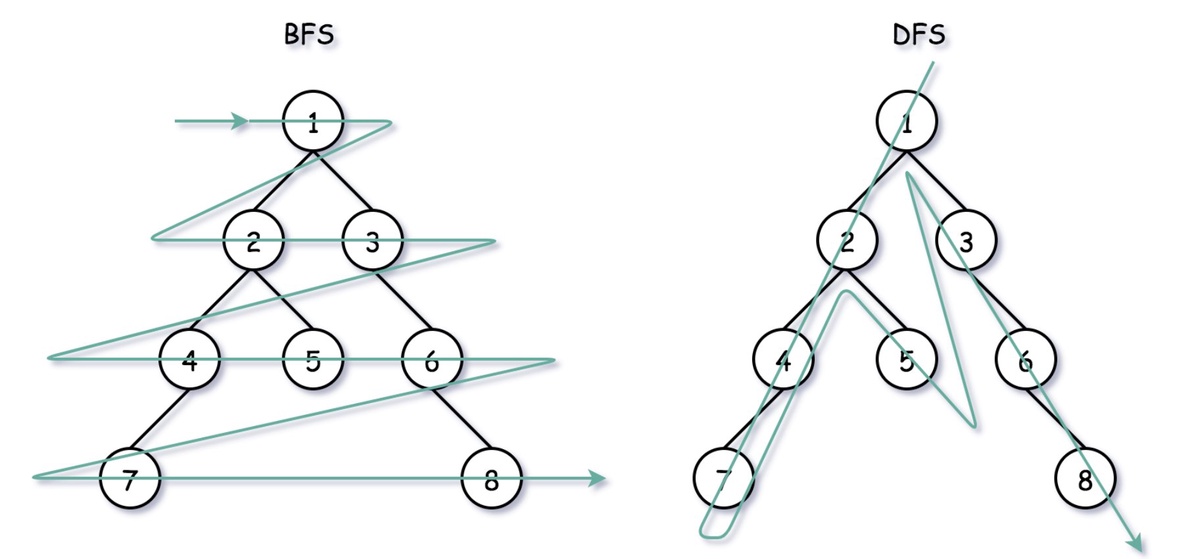Introduction:
Embarking on the journey to comprehend the intricacies of graph traversal, the Difference Between BFS and DFS emerges as a pivotal exploration. In this article, we navigate through the depths of these algorithms, uncovering their unique characteristics and applications. Join us on this enlightening voyage through the realms of graph theory.
Exploring the Depths: BFS and DFS Unveiled
BFS: The Breadth-First Search Odyssey
Begin our journey by immersing ourselves in the world of Breadth-First Search (BFS). This algorithm, akin to ripples spreading on water, explores the breadth of a graph. Traversing level by level, BFS ensures a systematic examination, making it ideal for the shortest problems and connected components.
-
Queue-Based Exploration
Delving into the mechanics, BFS employs a queue-based approach. Nodes are systematically visited, and their neighbors are enqueued for subsequent exploration. This meticulous process guarantees the shortest path is found, rendering BFS indispensable in network routing and social network analysis.
-
Real-world Applications
Unearth the real-world applications of BFS, from network broadcasting to social network friend suggestions. The algorithm's ability to uncover the closest connections echoes in scenarios like data validation and web crawling.
DFS: The Depth-First Search Expedition
Venturing into the abyss, we encounter Depth-First Search (DFS). Unlike BFS, DFS plunges deep into the graph's recesses, exploring a branch to its utmost depth before backtracking. This makes DFS apt for topological sorting and detecting cycles in graphs.
-
Stack-Based Adventure
In the journey of DFS, a stack becomes the trusty guide. Nodes are explored until the journey reaches its zenith, then retracing steps to explore alternate paths. This approach embodies the depth-first nature, enabling applications in maze-solving and puzzle-solving scenarios.
-
Real-world Applications
Uncover the practical applications of DFS, ranging from circuit design to language parsing. The algorithm's knack for exploring possibilities methodically finds resonance in scenarios like itinerary planning and Sudoku solving.
VISIT ALSO: Discuss an Example Where BFS and DFS Would Produce Different Results in Terms of Node Traversal Order.
Difference Between BFS and DFS: A Comparative Analysis
Algorithmic Contrasts
Dive into the specifics of the algorithms, highlighting the stark contrasts in their approaches. While BFS guarantees the shortest path, DFS excels in exploring possibilities exhaustively. Understand their strengths and weaknesses to deploy them judiciously in problem-solving scenarios.
Time and Space Complexity
Navigate through the intricacies of time and space complexity, essential factors in algorithmic analysis. Uncover how BFS's linear time complexity contrasts with DFS's deeper traversal, affecting performance in different scenarios. This insight aids in selecting the optimal algorithm for specific use cases.
Optimal Use Cases
Explore scenarios where one algorithm outshines the other. From game development to network routing, discern when to leverage BFS for efficiency or embrace DFS for exhaustive exploration. This strategic decision-making enhances problem-solving capabilities in diverse domains.
Frequently Asked Questions (FAQs)
Q: Is BFS always faster than DFS?
A: Not necessarily. The efficiency depends on the specific problem. BFS excels in finding the shortest path, while DFS may be more efficient for exhaustive exploration.
Q: Can BFS and DFS be used interchangeably?
A: It depends on the problem requirements. While both traverse graphs, their distinct approaches make them suitable for different scenarios.
Q: Are BFS and DFS used only in computer science?
A: No, their applications extend beyond computer science. BFS and DFS find utility in various fields, including social network analysis, linguistics, and puzzle-solving.
Q: Which algorithm is better for finding connected components?
A: BFS is often preferred for finding connected components due to its systematic exploration of graph breadth.
Q: Do BFS and DFS have limitations?
A: Yes, both algorithms have limitations. BFS may consume more memory, while DFS might not always find the most optimal solution.
Q: How do BFS and DFS impact real-world technologies?
A: They play pivotal roles in shaping technologies, influencing areas like network protocols, game development, and natural language processing.
VISIT ALSO: Lippan Art Kit: Your Creative Gateway
Conclusion: Navigating the Graph Landscape
As we conclude our expedition into the Difference Between BFS and DFS, the intricate web of graph traversal unravels. Each algorithm, with its distinct characteristics, offers a unique lens to perceive and solve problems. Whether opting for the systematic breadth of BFS or the profound depth of DFS, understanding their nuances empowers problem-solving across diverse domains


No comments yet